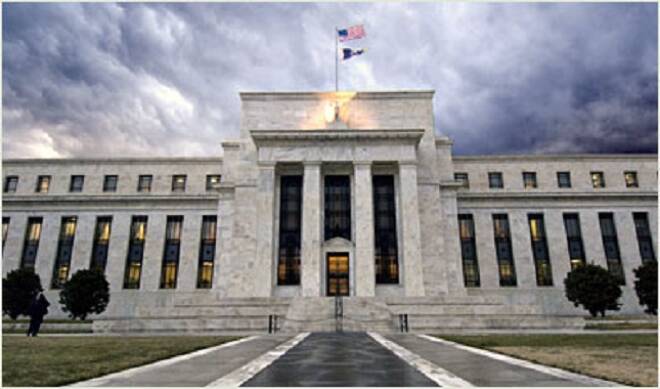Advertisement
Advertisement
Central Banks Overview
By:
Decisive action from central banks in New Zealand, India and Thailand fueled fresh speculation of deep cuts from the likes of the Fed and ECB. With geopolitical tensions rising and the yield curve signaling heightened recession fears, along with the palpable risk of a disorderly, no-deal Brexit scenario in less than three months, central banks should proceed with further easing measures into their next meetings.
Nearly all major Global Central Banks have adopted a more formal easing bias in their word cues, with the RBA being the first one to cut rates this year, followed by the RBNZ in May and the Fed in July by the widely expected 25 bps.
Stay tuned to the HotForex Analysis page for exclusive expert analysis of the Central Banks and other major market movements!
This week, however, dovish policy surprises from India’s central bank, New Zealand’s central bank and the Bank of Thailand saw those institutions join the march toward more accommodative policy globally. India and New Zealand cut rates by more than expected.
The RBNZ surprised markets with a hefty 50 bp cut that left the official cash rate at a record low of 1.00% and sparked fresh speculation of deep cuts worldwide. This was the first cut of such magnitude since 9/11. The RBNZ’s action comes after the RBA signaled that more rate cuts could be in the pipeline.
Thailand eased policy, contrasting with expectations for no change. The trio of dovish central bank policies surprised due to their outsized rate cuts.
The trio also added pressure on the remaining central banks which have so far maintained a steady policy outlook despite the global growth slowdown signals – weighed down by geopolitical tensions.
However, let’s have a closer look at some of the central banks’ Policy Outlooks ahead of their next meetings in September.
FOMC cut rates 25 bps as fully expected to a 2% to 2.25% range, in July. The Fed stated it lowered rates “In light of the implications of global developments for the economic outlook as well as muted inflation pressures.” However, the policy statement and Chair Powell’s press conference didn’t deliver the dovish policy path that had been priced in. The presser was highlighted by Powell’s comments that this is a “mid-cycle” action and “not the beginning of a lengthy cutting cycle.”
However, after this week’s aggressive central bank rate cuts seen from the trio, i.e. RBNZ, RBI and BoT, odds have improved for a 50 bp Fed cut in September, as the world kicks off a race to the bottom. Meanwhile, the ongoing trade concerns, with President Trump’s ratcheting up of his trade war with China, also increases the odds for Fed easing given the potential for a detrimental impact on the US economy and more precisely on growth, and low inflation.
ECB: The ECB kept policy rates on hold at the July meeting, while it managed to keep markets happy with a pretty dovish signal. Draghi laid the grounds for a pretty comprehensive set of easing measures in September that focuses not only on lower policy rates, but also additional asset purchases and a review of the central bank’s inflation target and forward guidance.
Meanwhile, the shape of the yield curve still signals heightened recession fears. Hence as the German curve is now negative in its entirety, markets are pricing in not just a comprehensive easing package in September, but further cuts later on as trade risks and Brexit jitters intensify. Additionally, the ECB’s bulletin today also affirmed that further easing measures are underway, but as usual stuck pretty much to Draghi’s script from the last press conference and had limited impact.
BoJ: The BoJ held policy steady, while highlighting downside risks from exports on the growth outlook. The Bank kept in place its yield-curve control program and asset purchases, matching widespread expectations.
In January, the BoJ reduced its inflation projections, with CPI for fiscal year (FY) 2018 now seen at 0.8% (was 0.9%), FY 2019 at 0.9% (was 1.4%) and FY 2020 at 1.4% (was 1.5%). Japan’s fiscal year begins in April.
The BoJ is anticipated to maintain its current extraordinary level of stimulus as they wait and see how global growth progresses this year, while it has warned that chronic ultra-accommodative policy “could destabilize the financial system,” although these risks were not judged to be significant at the present juncture.
Among the core central banks, the BoJ is firmly poised to be “low for longest“.
Andria Pichidi, Market Analyst at HotForex
(Read Our HotForex Review)
Disclaimer: This material is provided as a general marketing communication for information purposes only and does not constitute an independent investment research. Nothing in this communication contains, or should be considered as containing, an investment advice or an investment recommendation or a solicitation for the purpose of buying or selling of any financial instrument. All information provided is gathered from reputable sources and any information containing an indication of past performance is not a guarantee or reliable indicator of future performance. Users acknowledge that any investment in Leveraged Products is characterized by a certain degree of uncertainty and that any investment of this nature involves a high level of risk for which the users are solely responsible and liable. We assume no liability for any loss arising from any investment made based on the information provided in this communication. This communication must not be reproduced or further distributed without our prior written permission.
About the Author
Andria Pichidicontributor
Andria is a a Market Analyst with a mission to actively support HotForex’s clients in becoming better traders, by delivering daily market reviews.
Advertisement
